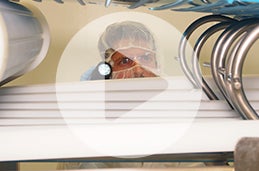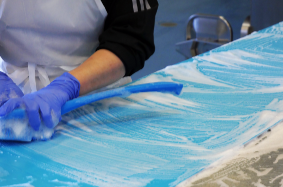Creating A Periodic Equipment Cleaning Program

When bakers think of sanitation as a “must do,” they think of routine cleaning initiated when a plant stops a production run or does a product changeover. However, there are areas of equipment and a facility that are not accessible during routine cleaning. Hard-to-reach and other at-risk locations not normally exposed need to be scheduled for cleaning through a periodic equipment cleaning (PEC) program.
PEC activities need to be part of an operation’s master sanitation schedule.
There have been lengthy articles written on the need for PEC to control microbial or allergen risks. In most cases, microbial risk is perceived to be lower in baked or fried goods. While this is true for some products in this category, others have been recalled because they were contaminated with Listeria monocytogenes or Salmonella. There is another risk beyond microbial or allergens that can be controlled with a PEC program. It is microbial infestation in equipment harborage spots or cavities prior to or after the kill step of an oven or a fryer. The accumulation of dry ingredients or product fines, a supportive growth temperature and a period of weeks or months between deep cleaning of the equipment provide ideal conditions for insect growth from egg to adult stages.
Some parts that need to be disassembled for periodic cleaning to prevent microbial and pest issues are guards on conveyors and other equipment, panels, assembly-creating cavities inside equipment, wire ways and wire bundles, and electrical boxes and control panels. Be curious and look for places where product and soil can accumulate. The intent is to take a proactive approach to prevent food quality or safety issues.
PEC activities should be added to the master sanitation schedule. Include some of the more difficult tasks on an annual schedule to take advantage of available time to get the work done while not competing with maintenance of other plant activities. All downtime takes advanced planning. PEC activities can also be coordinated with preventive maintenance or other activities to minimize the number and length of downtime events.
During disassembly, take notes and pictures of the equipment to document observations, and begin drafting a cleaning procedure to ensure the task is performed as intended over time.
It is important to establish a frequency for each PEC task. For micro-sensitive products, use indicator swabs to determine frequency based on micro counts. To prevent infestation, look for product buildups before they can occur. The frequency will be facility- and equipment-dependent and can be decided by taking the equipment apart and noting soil buildup. After a month passes, assess the equipment again and adjust the frequency accordingly. If buildups are minimal or nonexistent, frequency can be reduced until the final frequency is established.
During disassembly, take notes and pictures of the equipment to document observations, and begin drafting a cleaning procedure to ensure the task is performed as intended over time. The pictures will also help compare findings as the frequency of PEC tasks are adjusted to establish a baseline.
Detailed or deep-cleaning activities are typically performed periodically, so it is important to establish what will be disassembled, how many resources will be needed and how to track the process to ensure completion and avoid potential food safety or quality issues.
A similar concept is periodic infrastructure cleaning (PIC) that involves the scheduling of non-routine tasks such as duct cleaning, vent cleaning, lockers and more. PIC, PEC and routine cleaning tasks should be included as part of sanitation standard operating procedures and the master sanitation schedule.
In addition to routine sanitation, PIC and PEC programs reduce both microbial and insect-related foreign material risk to your products.




